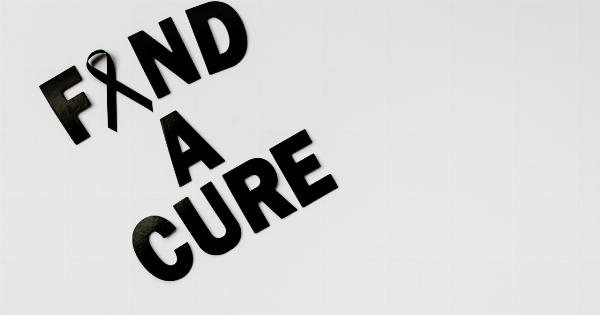Breast cancer is often associated with women, but it can also affect men. Although breast cancer in men is a rare occurrence, it is still important for men to be aware of the genetics and symptoms associated with this disease.
Understanding Genetics of Men’s Breast Cancer
The majority of breast cancers are caused by genetic mutations. Men with a family history of breast cancer are at a higher risk of developing the disease.
Individuals with a BRCA1 or BRCA2 gene mutation have an increased risk of developing both breast cancer and ovarian cancer. Men with BRCA2 mutations have a higher risk of developing breast cancer than men with BRCA1 mutations.
Other genetic mutations linked to breast cancer in men include:.
- CHEK2 mutations
- PTEN mutations
- TP53 mutations
It is important for men to understand their family history of breast, ovarian, and other cancers, so they can work with their healthcare provider to determine their risk of developing breast cancer.
Genetic testing can assist in identifying individuals with gene mutations linked to breast cancer.
Symptoms of Men’s Breast Cancer
The symptoms of breast cancer in men are similar to those in women. The most common symptom is a lump in the breast tissue. Other symptoms include breast pain, changes in nipple appearance, nipple discharge, and swelling of the breast tissue.
Men with breast cancer may also experience symptoms related to the spread of cancer to other parts of the body. These symptoms can include bone pain, shortness of breath, and jaundice.
Diagnosing Men’s Breast Cancer
Breast cancer in men is diagnosed using several methods, including:.
- Physical exam: During a physical exam, a healthcare provider will assess the breast tissue for lumps or other abnormalities.
- Mammogram: A mammogram is an x-ray of the breast tissue. Men may have a mammogram to screen for breast cancer, or it may be used to evaluate symptoms or abnormalities detected during a physical exam.
- Ultrasound: An ultrasound uses sound waves to create images of the breast tissue. It can be used to further evaluate a lump or other abnormality detected during a physical exam or mammogram.
- Biopsy: A biopsy involves removing a small amount of tissue from the breast to be examined under a microscope. This is often the only way to determine if a lump or other abnormality is cancerous.
Treating Men’s Breast Cancer
The treatment of breast cancer in men is similar to that in women. Treatment options include:.
- Surgery: The surgery may involve a lumpectomy or mastectomy to remove the breast tissue. In some cases, lymph nodes may also be removed.
- Chemotherapy: Chemotherapy uses medications to kill cancer cells. This treatment may be given before or after surgery.
- Radiation therapy: Radiation therapy uses high-energy x-rays to kill cancer cells. It may be used after surgery to destroy any remaining cancer cells.
- Hormone therapy: Hormone therapy uses medications to suppress hormone production or block hormone receptors. This treatment is only effective for cancers that are hormone receptor-positive.
Preventing Men’s Breast Cancer
Men can take steps to reduce their risk of developing breast cancer. These include:.
- Maintaining a healthy weight: Being overweight or obese increases the risk of developing breast cancer.
- Exercising regularly: Regular physical activity can help reduce the risk of breast cancer.
- Limited alcohol consumption: Drinking too much alcohol can increase the risk of breast cancer.
- Not smoking: Smoking has been linked to an increased risk of breast cancer.
Conclusion
Although breast cancer in men is rare, it is important for men to be aware of the genetics and symptoms associated with the disease.
Men with a family history of breast or ovarian cancer should speak with their healthcare provider about their risk of developing breast cancer. Early detection and treatment offer the best chance of a positive outcome.




























